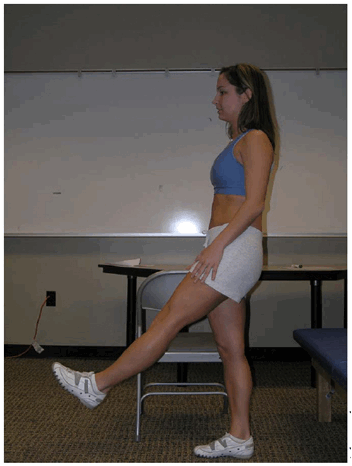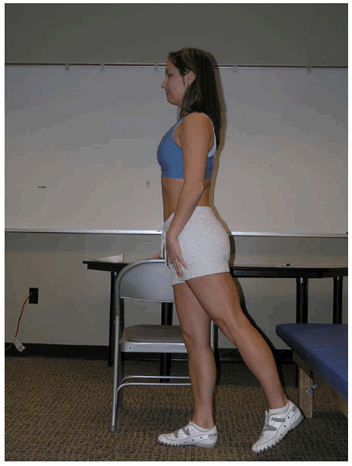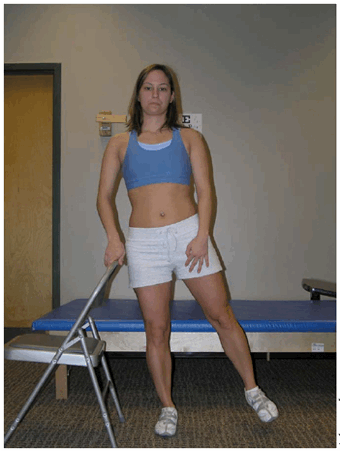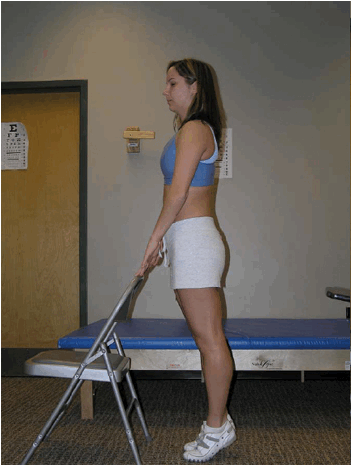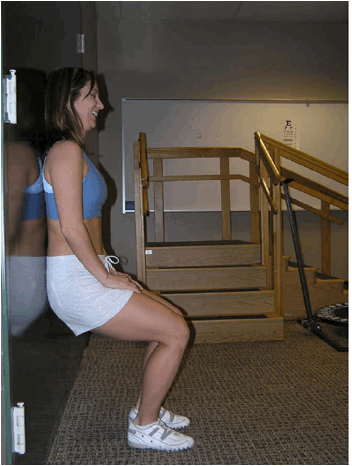Chemotherapy, Hormonal Therapy & Your Bones: What is the Role of Exercise?
encontrar mi
What is Menopause?
Menopause is defined as the final menstrual period, which can be confirmed after going 12 months without a period.
What are the Symptoms of Menopause?
- End of menstrual periods and reduced fertility
- Hot flashes and night sweats
- Sleep disturbances
- Increased headaches
- Difficulty with memory and concentration
- Mood swings
- Depression and anxiety
- Vaginal discharge, irritation, burning, dryness, itchiness, and pain
- Changes in sexual function – decreased desire
- Urinary incontinence
- Other potential changes
- Decreased bone mineral density (BMD)
- Weight gain
- Heart palpitations
- Joint pain
- Skin, hair, eye, mouth and dental changes
Early Menopause and Breast Cancer
In younger breast cancer patients, chemotherapy is more frequently associated with early menopausal symptoms.Adjuvant therapy, such as Tamoxifen and aromatase inhibitors, can also lead to an estrogen deficit and menopause symptoms.
General Benefits of Regular Physical Activity and Exercise
Exercise has been shown to be beneficial in many ways such as:
- Improvement in heart and lung function
- Lowering the risk of heart disease
- Decreased anxiety, depression and fatigue
- Improved feeling of well being
Impact of Exercise on Menopause Symptoms
Exercise has been shown to help reduce some of the symptoms of menopause. For example, yoga may decrease how often you experience hot flashes or lower the intensity of hot flashes. Yoga may also help decrease joint pain and improve your sleep.
Aerobic exercises, such as walking, can also help with menopausal issues. Walking can help improve the strength of your bones (bone mineral density; BMD), and control your weight. Adding in strengthening or resistance exercises can add to the benefits of exercise by improving your strength and balance.
Aerobic Exercises
It is important to check with your doctor before starting an exercise program during your cancer treatments, as there may be some days when you shouldn't exercise.
You should try to exercise at least 3 days per week during your treatment for cancer.
Warm Up
This is an important part of any exercise program. It is even more important if you are not used to exercising, if you have a heart problem or if you are older than 55.
- Walk slowly for five minutes. This helps to get your muscles and heart ready for exercise.
Aerobic Exercise – Training Zone
In this part of the program, you should try to sweat. You will know if you are exercising hard enough if you use an exercise chart.
Use an exercise chart.
- The chart below is called a Borg Scale. Look at the scale and ask yourself how hard you are working during your exercise.
Try to work hard enough so that you are between 11 and 13
Borg-RPE-Scale® [PDF]
Cool Down
At the end of your exercise, you need to cool down your heart, body temperature and muscles. You should walk slowly for 5 minutes before stopping. If you have a heart condition, your doctor may ask you to cool down for more than 5 minutes.
How many days each week should I exercise?
During treatment, you should try to exercise 3 days each week. Each time, you should try to exercise for 30 minutes. If you have not exercised before, or you are having a lot of side-effects from treatment, you should start more slowly.
- Start with 5 minutes, 2 times each day
- When you can walk for 5 minutes, try to add two more minutes.
- Keep adding a minute or two to your exercise time once a week until you are able to walk for 30 minutes at a time.
Exercise after treatment has stopped
Exercise can help you get back to the activities you enjoy. Always check with your doctor before starting to exercise.
Your exercise program should change in a few ways after treatment has ended.
Warm Up
- Walk slowly for 5 minutes
- You should take longer to warm-up if you have a heart condition or had a lot of side-effects from treatment
Aerobic Exercise – Training Zone
- You are now trying to sweat during activity for 30 minutes
- Use can use an exercise scale to see if you are working hard enough to get the most out of the program.
Borg-RPE-Scale® [PDF]
Heart Rate & Aerobic Exercise
- If you don't use an exercise scale, you can use your heart rate to see if you are working hard enough during exercise.
- By using heart rate, you will make an exercise program that is made just for you.
1. Subtract your age from 220. This is your maximum heart rate.
- For example, if you are 60 years old, your maximum heart rate would be (220-60) = 160
2. After sitting for a few minutes take your heart rate.
- Put your pointer finger and middle finger at the top of your thumb.
- Slide these two fingers down your thumb until you get to your wrist.
- Count how many beats you feel under your fingers for 60 seconds or 1 minute. This is your resting heart rate. Most people will have a resting heart rate between 60 and 100.
- Now you will figure out a heart rate range where you will break a sweat during exercise.
(HR max – HR rest) x .5 + HR rest = low end of training zone
(HR max – HR rest) x .65 + HR rest = high end of training zone
For example, I am a 60 year old woman who has finished treatment for colon cancer. I talked to my doctor about exercise and she says that I can and should start a program.
My maximum heart rate is: 220-60 = 160.
I count 78 beats at my wrist in 1 minute. This is my resting heart rate.
My training zone is:
(HR max – HR rest) x .5 + HR rest = low end of training zone
(160-78) x .5 + 78 = 119
(HR max – HR rest) x .65 + HR rest = high end of training zone
(160-78) x .65 + 78 = 131
After my 5 minute warm-up, I will walk faster. When I walk faster, I will take my heart rate. My goal is to have my heart rate between 119 beats/minute and 131 beats/minute. If my heart rate is between these numbers, I am walking at the right speed to get the most out of my exercise program.
If my heart rate is less than 119 beats/minute when walking, I should Walk Faster.
If my heart rate is more than 131 beats/minute when walking, I should Walk Slower.
**Important Information**
Chemotherapy and exercise
If you have gotten chemotherapy to treat your cancer, you must talk to your doctor about exercise. Each type of chemotherapy is different in how if affects your body. Some days, your doctor might ask you not to exercise because of low blood counts or fever. Some side-effects of chemotherapy that may affect your exercise are:
Anemia
- If you have anemia, you may feel tired or short of breath.
- Many people walk more slowly or walk for shorter amounts of time if they have anemia.
- Ask your doctor if you should exercise.
Low platelet counts (Thrombocytopenia)
- Platelets help to stop bleeding.
- Please talk to your doctor about activity suggestions when your platelets are low.
Tingling in your hands or feet (Peripheral neuropathy)
- Some types of chemotherapy cause tingling in your hands and feet.
- Tingling may affect your balance
- Talk to your doctor about exercise with peripheral neuropathy
- Find a physical therapist who knows about chemotherapy and peripheral neuropathy. They may be able to help with the tingling feeling and help your balance.
Food and Weight Loss
- If you have lost weight during treatment, you have also lost muscle.
- Exercise can help you get stronger
- Talk to a nutritionist about what foods you should eat to help you have enough energy to exercise.
Radiation Therapy and Exercise
Radiation therapy is a common treatment for cancer. Most people who have radiation feel tired. Exercise can help you deal with feeling tired and give you more energy.
OncoLink has a large section on cancer related fatigue, with helpful tips and information.
Radiation and the sun. You are more likely to get a sunburn during and after radiation therapy. Talk to your doctor about skin protection. You may want to exercise in the morning or in the early evening so that you are less likely to get a sunburn.
If you got whole body radiation therapy, you should be careful about exercising in hot weather. Your body may have trouble getting rid of the heat you make during exercise, which can be dangerous. Dress in light clothes and exercise in the morning or early evening. Talk to your doctor about when and how you should exercise.
Your Bones and Cancer
Some cancers affect the bones in the body, making them weak. Other times, the treatment you get for cancer can cause the bones to be weak. Exercise, if done right, can help to strengthen your bones.
Cancers that MAY affect your bones are:
- Multiple myeloma
- Lung cancer
- Sarcoma
- Breast Cancer
- Prostate Cancer
- Testicular Cancer
It is important that you talk to your doctor about the health of your bones.
Your doctor may tell you it is safe to exercise.
Your doctor may ask you to stop exercising until after treatment has ended.
You doctor may tell you not to use heavy weights for strengthening.
SAFETY WITH EXERCISE – IMPORTANT
- Talk to your doctor BEFORE starting an exercise program
- Tell your doctor if you:
- Have pain above your stomach while exercising (chest pain, left arm pain, jaw pain, neck pain or nausea)
- Dizziness
- Fall
- Feel unsteady
- Bruise a lot
- Have a fever
- Have Pain with walking
- Have Pain with sneezing, coughing or laughing
- Have numbness or tingling
- Have diarrhea
- Have constipation
- Urinate or pee a lot
- Urinate or pee less than usual
- Have swelling
QUICK TIPS FOR EXERCISE
Talk to your doctor about an exercise program
Do something that you find is fun and makes you happy
Find a partner
Talk to someone who has had cancer
Listen to music while you exercise
Do different types of exercise
Seek out an exercise specialist who knows about cancer
Set goals that you can reach
Be kind to yourself
Resistance or Strengthening Exercises
Disclaimer: Before starting any exercise program, you should consult with your physician to discuss health risks and to receive medical clearance after surgery, radiation therapy, chemotherapy, and/or other treatments. **Women with a history of bone metastasis associated with breast cancer must obtain medical clearance before beginning a resistance exercise program.
What are Resistance Exercises?
- Any exercise that tries to increase strength.
- Examples:
- Sit-ups
- Lifting weights
- Using weight machines at a gym
- Doing squats or lunges
Why Should I Perform Resistance Exercise?
- Improves one's ability to do things independently
- Improves one's ability to perform activities of daily life (i.e. bathing, dressing, work duties, cleaning, etc.).
- Strengthens your muscles
- Improves balance
- Helps keep your bones strong. This is important, as bones can become weak with age, with poor calcium intake, after menopause or in those who are not active.
How Often Should I Exercise?
- Begin with 1 day per week
- Set a goal of 2 days per week
How Much Weight Should I Begin with?
- Begin by using only your body weight as resistance. For example, do lunges or squats without any weights.
- After you practice using only your body weight, and these exercises become easy, try adding light hand-held weights or weights around your ankles.
How Long Should I Exercise?
- Begin with eight to ten repetitions
- You can start with one set and then slowly add in one additional set.
- For example, you can start your program by doing the standing hip flexion exercises described below. Start with ten repetitions. Do this exercise 2-3 times per week. If it becomes too easy, do ten repetitions then rest for 30 seconds and repeat. When that gets too easy, add a light weight around your ankle.
* Resistive exercise recommendations are based on evidence from research of postmenopausal women without a history of breast cancer. In addition, overall evidence based exercise recommendations were not studied in women with a history of bone metastasis associated with breast cancer. *
Example Exercises
Standing Hip Flexion (Marching) – Iliopsaos & Quadriceps (Thigh Muscles)
- Stand with your feet shoulder width apart.
- Hold onto a counter top, table or stable chair next to you, with one hand for balance support.
- Next, draw your umbilicus (belly button) in towards your spine (back). This will promote an upright posture and protect your back.
- Bring your leg up toward the ceiling, allowing the knee to bend in a slow and controlled motion.
- Return to starting position.
- Start with 8-10 repetitions and increase as described above.
- Take a brief rest and repeat a second time.
- Repeat with the opposite leg.
Standing Hip Extension – Gluteus Muscles (Buttocks)
- Stand with your feet shoulder width apart.
- Hold onto a counter top, table or stable chair in front of you, with one hand for balance support.
- Next, draw your umbilicus (belly button) in towards your spine (back). This will promote an upright posture and protect your back.
- Keeping your leg straight, kick the leg behind you in a slow and controlled motion.
- It is important to keep your body upright, do not allow yourself to bend forward.
- Return to starting position.
- Start with 8-10 repetitions and increase as described above.
- Take a brief rest and repeat a second time.
- Repeat with the opposite leg.
Standing Hip Abduction – Gluteus Medius (Buttocks)
- Stand with your feet shoulder width apart.
- Hold onto a counter top, table or stable chair next to you, with one hand for balance support.
- Next, draw your umbilicus (belly button) in towards your spine (back). This will promote an upright posture and protect your back.
- Keeping your leg straight, kick the leg out to one side in a slow and controlled motion.
- It is important to keep your body upright, do not allow yourself to bend/lean to the opposite side or forward.
- Return to starting position.
- Start with 8-10 repetitions and increase as described above
- Take a brief rest and repeat a second time.
- Repeat with the opposite leg.
Standing Squats – Gluteus Muscles and Quadriceps (Buttocks and Thighs)
- Stand with your feet shoulder width apart.
- Have a counter top, table or stable chair in front of you and a chair behind you for support.
- Next, draw your umbilicus (belly button) in towards your spine (back). This will promote an upright posture and protect your back.
- While holding onto the counter top, table or stable chair in front of you, slowly bend your knees as if you were to sit in the chair behind you.
- It is important to keep your back straight.
- Return to the starting position in a slow and controlled motion.
- Start with 8-10 repetitions and increase as described above.
- Take a brief rest and repeat a second time.
Standing Military Press – Deltoid, Triceps and Pectoralis Major (Shoulders, Chest and Back of Arm)
- Stand with your feet shoulder width apart.
- Next, draw your umbilicus (belly button) in towards your spine (back). This will promote an upright posture and protect your back.
- Bring both arms in front on your body with the elbows bent. Then raise one arm up over head in a slow, controlled motion.
- Return to starting position.
- Repeat with the opposite arm.
- Start with 8-10 repetitions and increase as described above.
- Take a brief rest and repeat a second time.
Abdominal Crunch – Rectus Abdominus and External Oblique (Stomach Muscles)
- Lie down on your back with both legs bent.
- Next, draw your umbilicus (belly button) in towards your spine (back). This will protect your back.
- With your hands supporting your head or across your chest, slowly raise your shoulders off the floor/mat.
- It is important to make sure you are lifting your shoulders off the floor and that your neck remains in a neutral position.
- Return to the starting position in a slow and controlled motion.
- Repeat 10-15 times.
- Take a brief rest break and repeat a second time.
Abdominal Crunch with Rotation – Rectus Abdominus, External and Internal Obliques (Stomach Muscles)
- Lie down on your back with both legs bent.
- Next, draw your umbilicus (belly button) in towards your spine (back). This will protect your back.
- With your hands supporting your head or across your chest, slowly raise your shoulders off the floor/mat bringing one elbow to the opposite knee.
- It is important to make sure that you are lifting your shoulders off the floor and your neck remains in a neutral position.
- Return to starting position in a slow and controlled motion.
- Start with 8-10 repetitions and increase as described above.
- Take a brief rest and repeat a second time.
Swimmers – Erector Spinae, Gluteus Muscles (Arm, Back, and Buttock Muscles)
- Lie down on your stomach with both arms extended over head. If needed, you can place a towel roll under your forehead for comfort.
- Next, draw your umbilicus (belly button) in towards your spine (back). This will protect your back.
- Slowly raise one arm and the opposite leg off the floor/mat, hold for 5 seconds.
- Return to starting position in a slow and controlled motion.
- Start with 8-10 repetitions and increase as described above.
- Take a brief rest and repeat a second time.
Superman/Trunk Extension – Erector Spinae (Arm and Back Muscles)
- Lie down on your stomach with both arms extended over head. If needed, you can place a towel roll under your forehead for comfort.
- Next, draw your umbilicus (belly button) in towards your spine (back). This will protect your back.
- Slowly raise both arms and chest off the floor/mat, hold for 5 seconds.
- Return to starting position in a slow and controlled motion.
- Start with 8-10 repetitions and increase as described above.
- Take a brief rest and repeat a second time.




